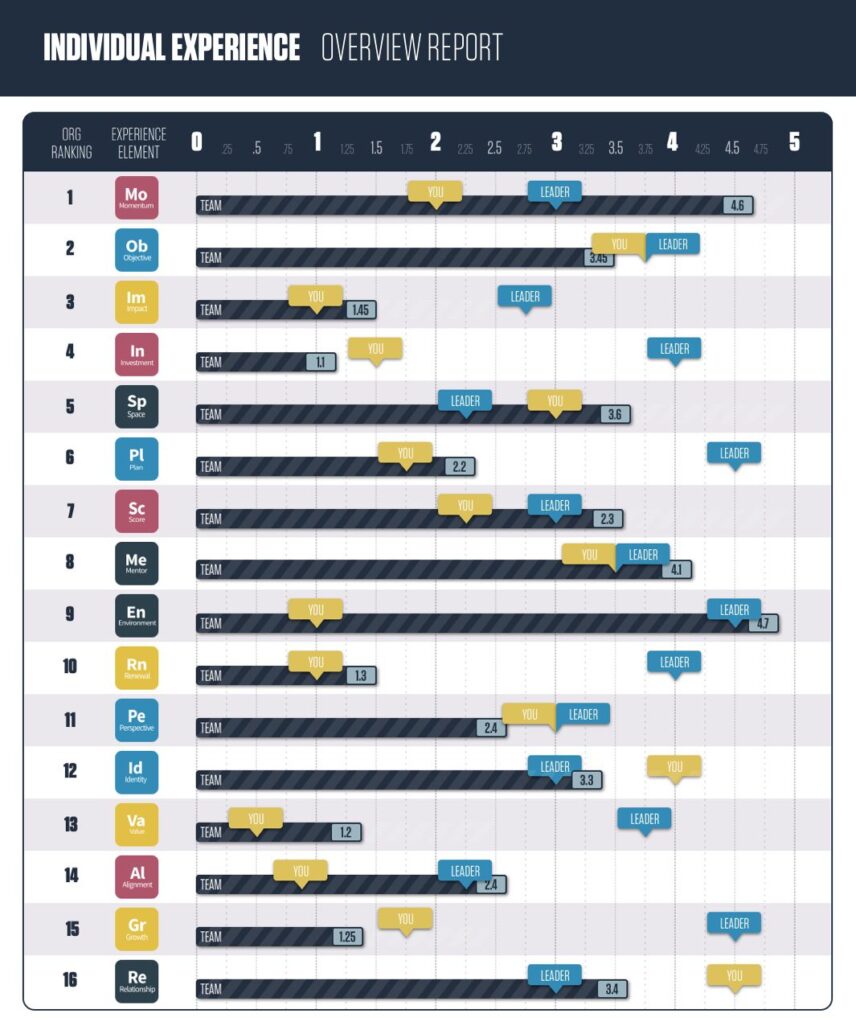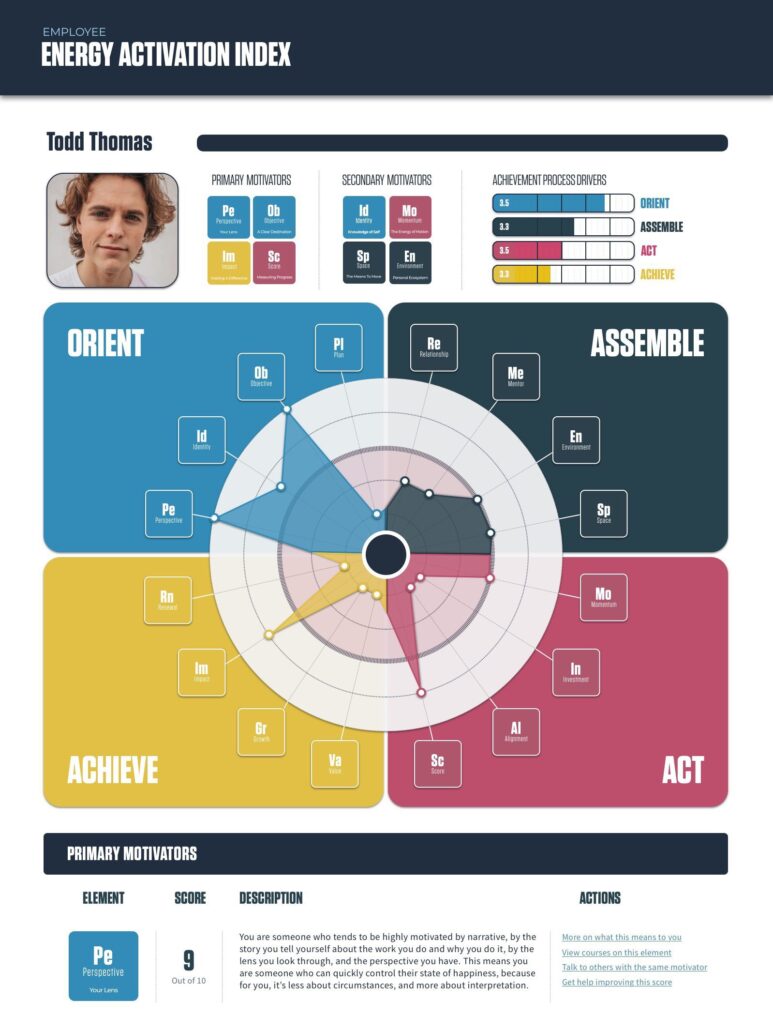MEASURING
EMPLOYEE & TEAM EXPERIENCE
ONLY ONE OF OUR SCIENCE-BACKED ASSESSMENTS
measuring
team experience
The experience someone has with the team they are on is one of the most significant factors in driving employee satisfaction, performance, and engagement.
Team experience holds an incredibly strong correlation to positive team outcomes, regardless of the type of team or the type of work the team does. This was further validated just last year with new research by ADP in their Global Workforce Study, as well as by Harvard Business Review Analytic Services.
But despite the growing data around the importance of team experience, organizations are often blind to teams and continue to focus on metrics around the individual (as leader or employee) independent of their team.
Part of the problem is that there is no good instument to measure team experience… until now.
The Life Engineering Team Experience Assessment is an all-new, proprietary approach that helps organizations identify the drivers of team experience, and the level to which they are either active or missing in their teams.
This is especially valuable during times when there is a high degree of organizational change, like what we see during the work-from-home—and now the return-to-work—dilemmas surrounding COVID-19.
Through one simple survey, we are able to identify at-risk members of a team and whether that may be a problem with the individual, the leader, or dysfunction within the team itself.
We can identify the ingredients of an organization’s highest performing teams, so they can go to work preserving the elements driving that team’s unique experience formula and replicating it across similar teams.

team dynamics
The Team Experience Assessment is the first of its kind, allowing leaders and organizations an opportunity to get vital optics on team health, and will create critical insights that can lead to powerful change and increased team outcomes.
It also identifies the natural dynamics of a team, uncovering the formula of elements that matter most to the overall energy undercurrent of that team. Identifying the dynamics
of your most high-functioning teams opens the door for powerful insights into what drives team performance, including the ability to help leaders know what formula leads to success in teams “similar” to their own.
That insight can then drive very targeted and tailored consulting, coaching, and leadership development efforts.
measuring
team fit
Armed with insights on Team Dynamics, the Energy Activation Index can then be used by a leader to determine how likely an individual is to be successful on any given team (or why they may be struggling with a team they’re on).
For instance, if you have a high-functioning team with an overall high team experience score but a low score on a particular element, it means that element isn’t particularly important to the performance of that team.
But if you place somebody on that team who has that element as a primary motivator, chances are it will negatively impact that person and can detract from the team experience as a whole.

This understanding can help a leader either know how to close that experience gap, or perhaps find a team within the organization with a “Team Dynamic” that better matches that individual’s personal motivation formula.
What’s more, a candidate can take the Energy Activation Assessment even before the hire, as a way of determining that employee’s likelihood to be a good culture fit for the team and predicting potential conflict before it ever even arises.
That critical insight, delivered early, can help a leader or an organization prevent a bad hire or provide leadership development direction to the leader whose team the employee is about to join.

The Energy Activation Index and Engagement Index with their comparison report are part of our Engagement Assessments. See our Engagement Assessments page (link below) for details.

